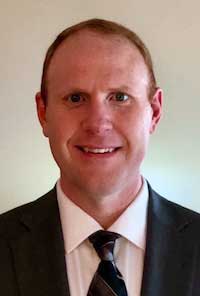County’s Public Health director testifies in Albany, sharing concerns about state funding
Press Release, Orleans and Genesee County Public Health Departments

Paul Pettit
ALBANY – New York’s county health officials on Tuesday urged Legislative leaders to issue a “call to action” to counter elements of the Governor’s 2019-2020 Executive Budget proposal that significantly underfund local health departments which will be critical partners in implementing new health policies, including legalized recreational marijuana, “Tobacco 21” and an expanded child lead poisoning prevention plan.
The public health officials’ concerns were shared in formal testimony by the New York State Association of County Health Officials (NYSACHO), presented at the joint Legislative hearing on the health sections of the Executive’s 2019- 2020 budget proposal.
While lauding policy elements of the Governor’s budget plan, including the expanded lead exposure prevention plan and raising the legal tobacco use age to 21, NYSACHO President Paul Pettit told members of the Legislature that the proposal cuts millions from public health, under what is known as Article 6 funding, while significantly increasing the obligations of local health departments. Pettit also is the public health director for Orleans and Genesee counties.
“We’re asking the Legislature to initiate a call to action for a reinvestment of resources into public health and safety infrastructure in New York State through bolstered funding of Article 6. By doing so, you will be demonstrating your commitment to public health preparedness and safety measures aimed to protect residents of New York State,” testified Pettit, who is also the Public Health Director of Genesee and Orleans counties.
Pettit told legislators that local health departments (LHDs) have “reached a tipping point” and require additional resources to adequately maintain core public health services, address emerging threats, and respond to new policies. Specifically, NYSACHO highlighted the following priorities:
- Restoration of the proposed cut to State Aid Reimbursement for NYC Department of Health and Mental Hygiene, which would reduce the percent of reimbursement above the base grant from 36% to 20%. This cut would strike a severe blow to the core public health services protecting 43% of our state’s citizens.
- Allocation of additional resources to Article 6 base grants to ensure crucial public health services can be deployed and sustained.
- Consideration of a slow and cautious approach to legalization of an adult-use marijuana program with the interest of public health and mental health at the forefront of decision making by:
- Ensuring local health departments receive flexible funding to expand work-force capacity. Protecting public health must be the first major pillar of a regulated marijuana program and must be funded sufficiently to ensure harm reduction.
- Guaranteeing local health departments, through NYSACHO, have a seat at the table as regulations and policies are developed.
- Support for, and reinforcement of the Executive’s proposal to adopt Tobacco 21 policy statewide and all components of the tobacco control package which will protect millions of New Yorkers from exposure to dangerous tobacco products.
- Recognition that unfunded public health policy results in poor policy. Local health departments are committed to supporting and carrying out effective public health policy, but the success of new or expanded policies can only be achieved with investments in Article 6 state aid, or within flexible grant programs to allow for effective implementation at the local level.
- Early Intervention: NYSACHO supports the proposed 5% rate increase for targeted service providers. Though it remains to be proven whether or not this rate increase will improve provider capacity, we believe this increase may prevent further erosion of existing capacity. Furthermore, the proposed budget does not yet account for this rate increase in cost to localities.
- Lead Poisoning Prevention: NYSACHO supports lead poisoning prevention efforts to lower the actionable blood lead level to 5 ug/dl. However, local health departments must be resourced with sufficient and flexible funding if we are to implement the expanded work this will require on the local level. NYSACHO conceptually supports primary lead poisoning prevention activities, including those such as the Governor’s lead safe housing policy. However, to adopt such a policy without providing the resources local health departments will need for effective implementation would doom the policy to certain failure.







































































